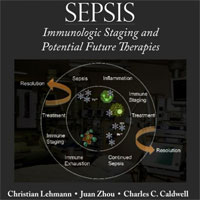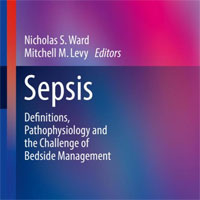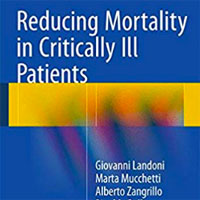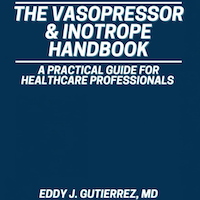Tag: bleeding
Enteral Fluid Resuscitation? The WHO to the rescue in the ED/ICU?
Prior to the 1970's, restricting oral intake was a "cornerstone" therapy of diarrheal illness, due to the pervasive belief that the GI tract needed time to heal and recover before resuming normal function. This was felt... read more
Tranexamic Acid in TBI – CRASH-3 Trial Treatment
The CRASH-3 trial is a multi-centre, randomised, placebo-controlled trial of the effects of tranexamic acid on death and disability in patients with traumatic brain injury (TBI). Patients with reactive pupils and/or mild... read more
Low-flow Assessment of Current ECMO/ECCO2R Rotary Blood Pumps and the Potential Effect on Hemocompatibility
The role of blood pumps in contributing to adverse effects at the lower blood flow rates used during ECCO2R is shown here to be significant. Current rotary blood pumps should be used with caution if operated at blood... read more
Epidemiology of Clinically Relevant Bleeding in Critically Ill Adolescents
Clinically Relevant Bleeding (CRB) is common in critically ill adolescents who are at high risk of venous thromboembolism (VTE). Admission after trauma or surgery can be used to stratify the risk of CRB in this population.... read more
Effect of Catheter Ablation vs Antiarrhythmic Drug Therapy on Mortality, Stroke, Bleeding, and Cardiac Arrest Among Patients With Atrial Fibrillation
The CABANA Randomized Clinical Trial. In this randomized clinical trial involving 2204 patients with atrial fibrillation, catheter ablation, compared with medical therapy, did not significantly reduce the primary composite... read more
Stress Ulcer Prophylaxis with Proton Pump Inhibitors or Histamin-2 Receptor Antagonists in Adult Intensive Care Patients
In this updated systematic review, we were able to refute a relative change of 20% of mortality. The occurrence of GI bleeding was reduced, but we lack firm evidence for a reduction in clinically important GI bleeding. The... read more
Resuscitation of Endotheliopathy and Bleeding in Thoracic Aortic Dissections
In this randomized, clinical pilot trial of patients undergoing emergency surgery for thoracic aorta dissections, we found that OctaplasLG reduced glycocalyx and endothelial injury, reduced bleeding, transfusions, use of... read more
Why Do Bleeding Trauma Patients Die?
It is important that we recognize that we have seen a reduction in the number of deaths from trauma. That's a great thing of course, but we should not be complacent. It's also worth looking at where and how patients die.... read more
What’s the Bleeding Problem with Trauma Laparotomies?!
Mortality for hypotensive trauma patients undergoing emergency laparotomy have not changed in 20 years. This blog explores the literature and the future! Wait! We're emergency physicians, why do we care about laparotomies?!... read more
Transient Systolic Anterior Motion with Junctional Rhythm After Mitral Valve Repair in the ICU
This case report shows that junctional rhythm can cause deterioration of SAM, LVOTO, and MR, and can lead to unstable hemodynamics in a patient with right ventricular failure after MVR. Atrial pacing can resolve SAM, LVOTO,... read more
EHR-guided Strategy Reduces Postop VTE Events
By incorporating algorithms into the electronic health record (EHR), UPMC was able to realize a "dramatic" 72% reduction in missed doses, from 4,331 missed doses in 2014 to 1,193 in 2015, Dr. Neal told attendees in a session... read more
Airway Management Techniques during Massive Regurgitation, Emesis, or Bleeding
Friend to the show, Jim DuCanto has been obsessed with SALAD. Not the leafy greens delicately touched with a tart emulsion, but with Suction Assisted Laryngoscopy and Airway Decontamination (SALAD). Jim DuCanto, MD is an... read more
Management of the Traumatized Airway
There is a lack of evidence-based approach regarding the best practice for airway management in patients with a traumatized airway. Airway trauma may not be readily apparent, and its evaluation requires a high level of suspicion... read more
Early Hemorrhage Control and Management of Trauma-induced Coagulopathy
Trauma resuscitation should focus on early goal-directed therapy with use of viscoelastic hemostatic assays while initially applying a ratio 1:1:1 driven transfusion therapy (with red blood cells, plasma and platelets) in... read more
Bleeding During Percutaneous Dilatational Tracheostomy – What to do while waiting for the surgeon?
A patient suffered significant bleeding during an attempt at percutaneous dilatational tracheostomy due to an aberrant anterior jugular vein. Bleeding was controlled with pressure temporarily, but quickly returned necessitating... read more
Pharmacomechanical Catheter-Directed Thrombolysis for Deep-Vein Thrombosis
The post-thrombotic syndrome frequently develops in patients with proximal deep-vein thrombosis despite treatment with anticoagulant therapy. Pharmacomechanical catheter-directed thrombolysis (hereafter "pharmacomechanical... read more
Should All Massively Transfused Patients Be Treated Equally?
Although balanced resuscitation has become integrated into massive transfusion practice, there is a paucity of evidence supporting the delivery of high ratios of plasma and platelet to RBCs in the nontrauma setting. This... read more
Venous Thromboembolism Prophylaxis in Major Orthopedic Surgery
Few head-to-head treatment comparisons have sufficient evidence. Most studies evaluated low molecular weight heparin (LMWH), not low-risk interventions (such as aspirin and mechanical devices); most reported on total deep... read more
Thrombocytosis in the ED
Both reactive thrombocytosis and clonal thrombocytosis may be associated with vasomotor symptoms. The key difference is that thrombotic and bleeding events are much more common in myeloproliferative thrombocytosis, whereas... read more
Uncontrolled Bleeding Stopped By Injectable Viscous Hydrogel
A new study describes a novel embolic agent for endovascular embolization procedures that has a hemostatic activity comparable to that of metallic coils, the current gold standard. The nanocomposite STBs are injected through... read more









